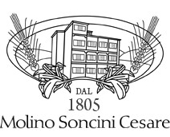2 January 2015
Since you don't know a lot about me, you might think that I was born with a train ticket in one hand and a list of excuses in the other. The truth is that I have never been a rebel. But I'm here now, and am writing to tell you that I told everyone that I was coming to Italy to cook at the wedding of a childhood friend, but in reality there was no friend.
So here I am, and I have decided to travel around the place starting from the centre, so that I can find out for myself whether what they say to me about Italy is true: that some days the fog is so thick that you cannot even see the road you are walking on, that often you will not find bottled water on an Italian dinner table, but only wine, and that all the men aged 40 and over still live at home with their parents. And that they only need to get a slight cold and they start talking about death. I have decided to wander around the country, starting from the centre: I like to think that if Italy was a living body, this would be its heart.
I reach Parma, in Emilia Romagna, in the evening by train. The young boy seated next to me has been reading for nearly four hours now. There is a woman who has been standing up for a while now, her coat buttoned right up to her neck, with that look on her face that speaks of someone who cannot wait to get home.
While I am preparing to get off the train, I will leave you a recipe. This is the first thing that I will eat when I get off, which seems to be the same thing that everyone in the carriage will do, as they have not talked about anything else.
It's a form of filled pasta, symbol of the city of Parma, a dish eaten at Christmas and New Year: they call them “Anolini” or “Cappelletti”, as they resemble small hats. Knowing this fact makes me look at this new land with a smile on my face.
I wish you a Merry New Year!
And you can wish me Bon Voyage, if you like.
L.
Journeys into flour 1 - Emilia Romagna

Fill a large pot with water and start to heat, with a small amount of salt, and the cleaned celery, onion, carrot and tomato. Before it starts to boil, add the cleaned capon and the beef bone. Leave it to simmer, stirring with a wooden spoon, for two hours.
While the broth simmers, prepare the stew: melt the butter in a pan, and leave it to simmer on a low flame with the chopped carrot and celery. Add chopped pieces of the meat and the salami, along with the cloves and pepper. Once the meats started to brown slightly, add the broth, and every now and again, a spoonful of the red wine, to add flavour to the stew. The stew needs to be cooked for around 8 hours on a low flame. After 6 hours, add some more of the broth with the spoonful of the tomato paste.
Once cooked, the meat will appear almost disintegrated in a very thick sauce. Separate the sauce and pass the meat through a potato masher. Mix in the breadcrumbs, the Parmesan cheese, the eggs, a pinch of salt and the nutmeg. The result will be a thick and homogenous filling that can be left to rest in the fridge, covered with clingfilm.
Now prepare the pastry: vigourously mix the flour, an egg and a pinch of salt together, until it becomes dense and smooth. Add water only if the mixture seems too hard. Now run a rolling pin over the mixture, and cut into strips about 9-10cm wide: in the middle of each, add small mounds of the filling. Fold one edge of the pasta back onto the other, and squeeze the mounds together with the fingers, so that all the excess air is removed. On a floured surface, cut each one with a cookie-cutter, or if you do not have one, the edge of a small liquor glass.
Once ready, cook the anolini in the broth, and serve hot, with the broth, with a generous helping of grated Parmesan on top.



